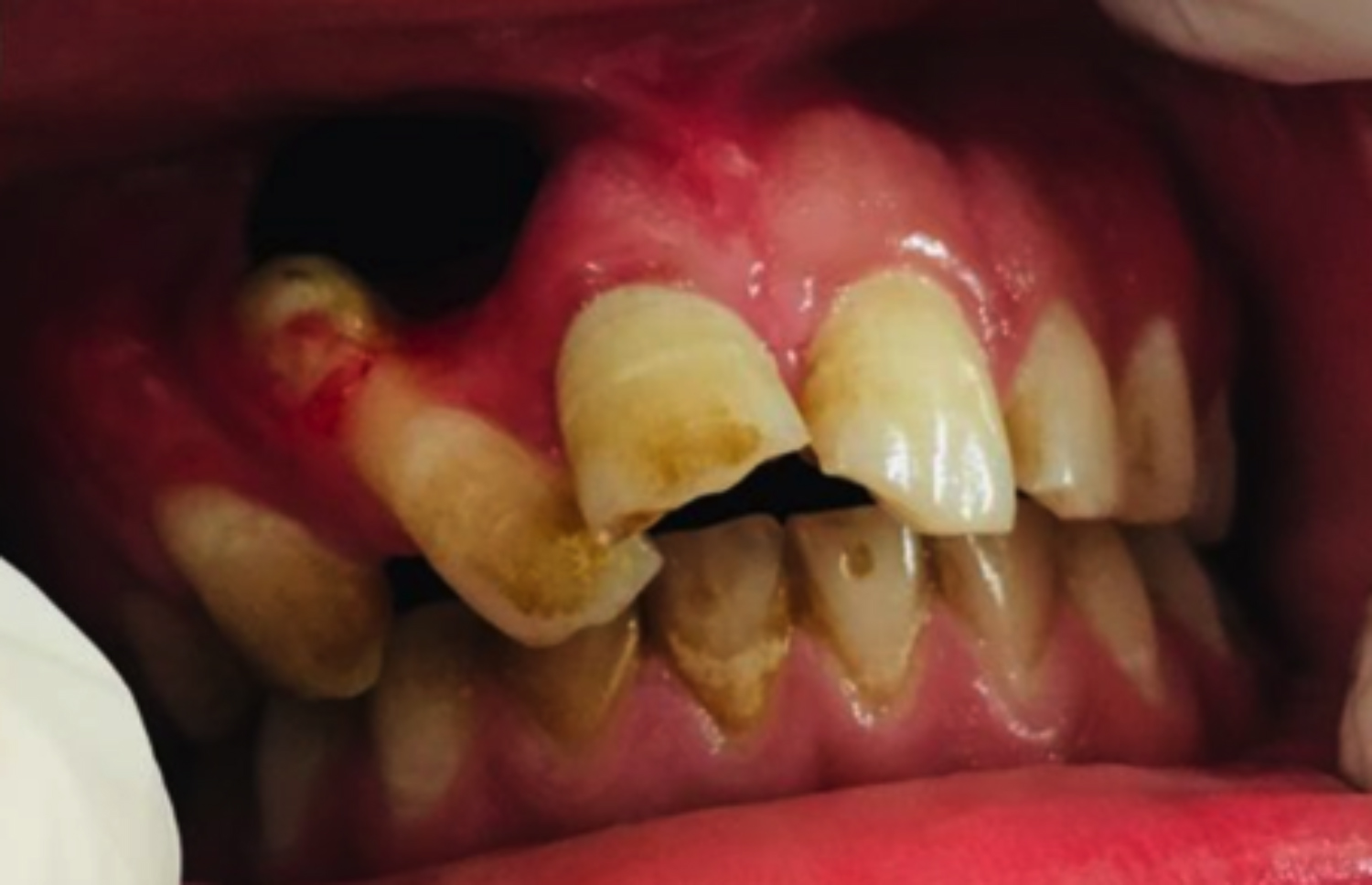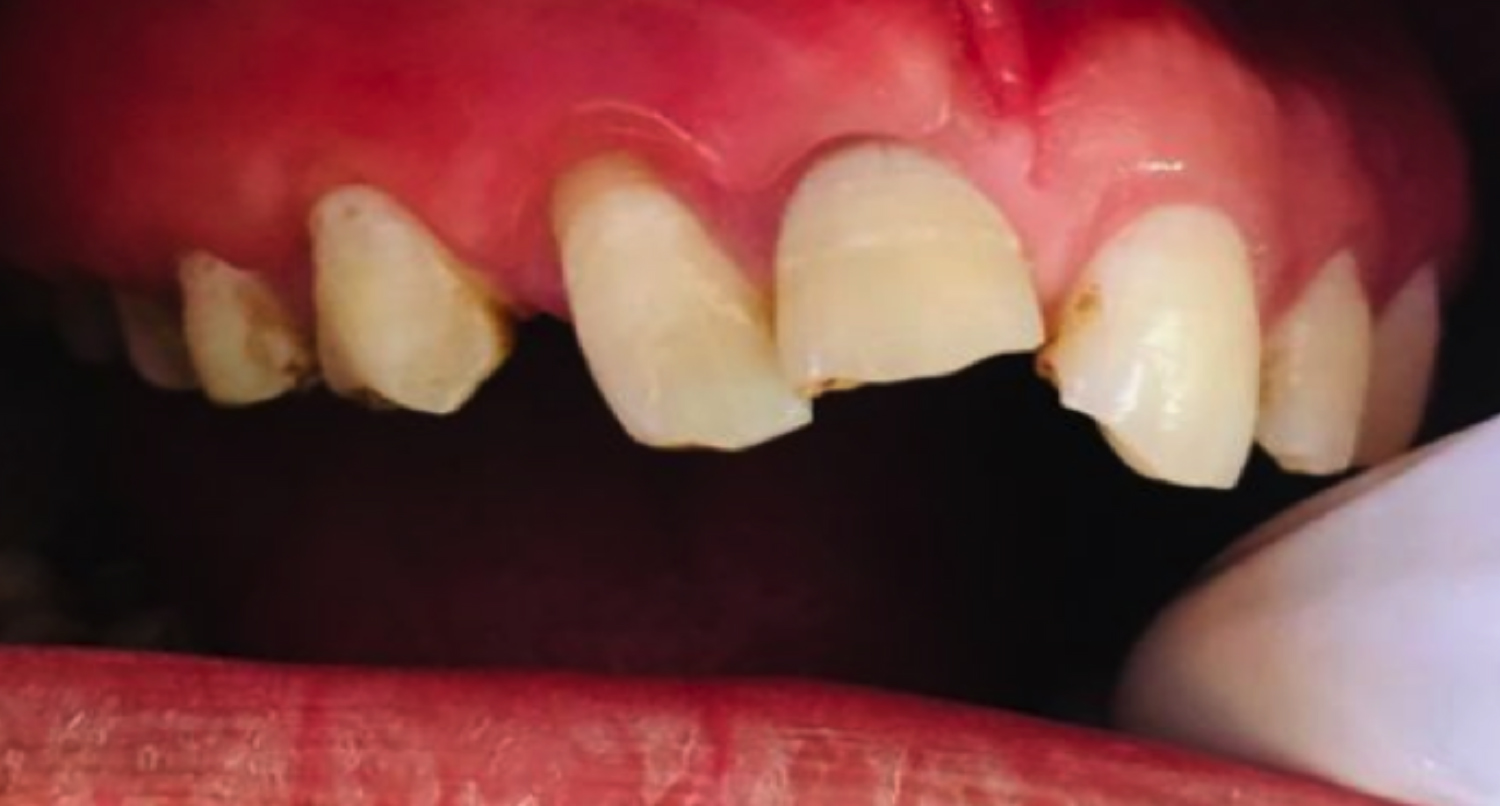Obturator-cum-gingival Veneer
By Lubna Memon, Ahsan InayatAffiliations
doi: 10.29271/jcpsp.2022.08.1092Sir,
An obturator is defined as a maxillofacial prosthesis used to close a congenital or acquired opening, primarily of the hard palate or contiguous alveolar or soft tissue structures.1 The extension of obturator in the defect varies according to the configuration of the defect, character of its lining tissue, and functional requirements for stabilization, support, and retention of the prosthesis.2 The gingival veneers are prosthetic devices that are used intraorally to camouflage or improve the esthetic appearance of gingiva in patients presenting with gingival recession or any periodontal treatment.3 A gingival veneer represents a conservative procedure as it does not require any preparation of abutments. It is simple and cost-effective. Hence, it may be indicated in cases of poorly contoured gingiva from the labial side, poor esthetics, exposed root surfaces, and in cases of root–dentin sensitivity.1-4 We report the use of an obturator-cum-gingival veneer fabricated for a case of open surgical site treated with marsupialisation of radicular cyst to serve two roles: obturating the surgical defect and to mask the root part of the abutment.
 Figure 1: Intra-oral examination showing the site of previous surgical resection.
Figure 1: Intra-oral examination showing the site of previous surgical resection.
 Figure 2: After periodontal therapy and oral hygiene maintenance at 7-day follow-up.
Figure 2: After periodontal therapy and oral hygiene maintenance at 7-day follow-up.
 Figure 3: Correction of surgical site defect with a modified gingival veneer.
Figure 3: Correction of surgical site defect with a modified gingival veneer.
A 17-year male was referred from the Oral and Maxillofacial surgery department to the outpatient department of prosthodontics for replacement of his soft tissue defect with a prosthesis. The patient’s presenting complaint was of oro-nasal communication in the right side of the maxillary arch. His medical history was not significant. On dental history, the patient had undergone surgical excision of the radicular cyst under general anesthesia one month back and the surgical site remained open due to lack of approximation of tissues. On intraoral examination, there was poor periodontal health with receding gums, and food impaction in both arches (Figure 1). The patient also complained of sensitivity and wanted this surgical site to be closed by a prosthesis. He had no missing teeth, although teeth were maligned. The patient expressed dissatisfaction with esthetics with a space on the right maxillary labial vestibule. After detailed workup, a treatment plan was made to fabricate an obturator-cum-gingival veneer for this patient. Instructions were given to the patient regarding the treatment and mouth preparation prior to starting the procedure. The patient gave his consent to process the treatment. He first received phase-I therapy, which included oral-hygiene instructions, scaling, and root planing. After 1 week of follow-up (Figure 2), he was referred to the department of prosthodontics. A perforated metallic stock tray with irreversible hydrocolloid impression material (Alginate) was used to make the impression. The cast was prepared using type IV die stone. The design was made on the case and a gingival prosthesis was waxed, flasked, and then processed in heat-cured acrylic. Retention was achieved with the undercuts. After curing, the prosthesis was removed from flask, trimmed, finished, and polished. It was tried in the mouth and required adjustments were made (Figure 3). The patient was satisfied as this was a minimally invasive and cost-effective option. The aims of restoring the quality of life, contour, and improvement in the compromised appearance were achieved. The patient is on follow-up.
AUTHORS’ CONTRIBUTION:
LM: Supervised the procedure and reviewed the manuscript and made corrections before submission.
AI: Drafted the manuscript, performed the clinical procedure, and took the images.
All the authors have approved the final version of the manuscript to be published.
REFERENCES
- Ferro KJ, Morgano SM, Driscoll CF. The glossary of prosthodontic terms. J Prosthet Dent 2005; 94(1):10-92. doi: 10.1016/j.prosdent.2005.03.013.
- Kumar J, Kandarphale MB, Aanand V, Mohan J, Kalaignan P. “Definitive obturator for a maxillary defect. J Integ Dentis 2017; 2(3):1-4.
- Ankli V, Limeira FI, Yamauti M, Melo Sa TC. Gingival veneer used as prosthetic solution for esthetic-compromised malpositioned dental implant. Contem Clin Dent 2018; 9(1):123. doi: 10.4103/ccd.ccd_739_17.
- Burhan R, Kazmi SM, Quraeshi S. Severe gingival recession: Gingival veneer a method of camouflage. J Coll Phys Surg Pak 2015; 25(7):549-50.